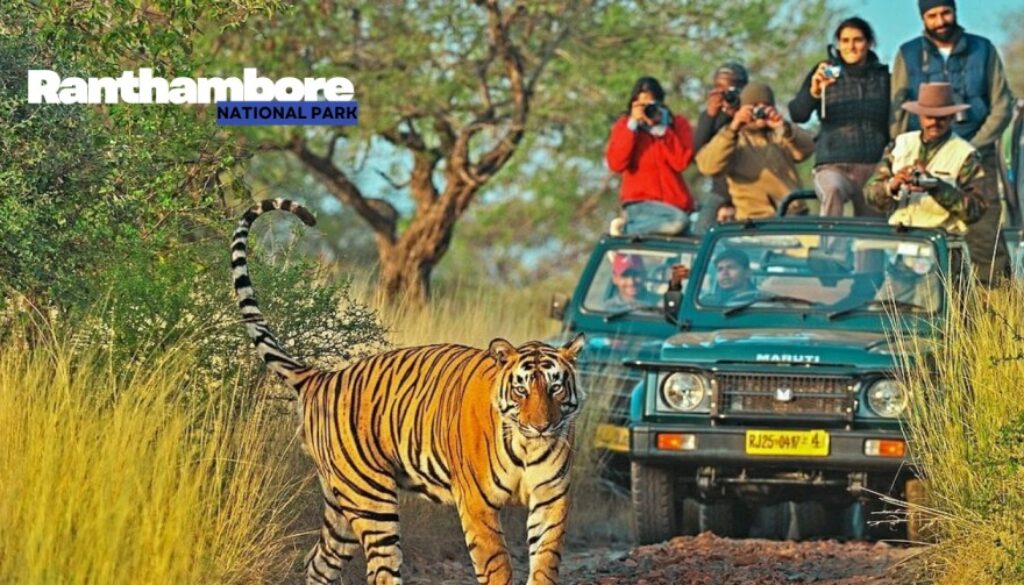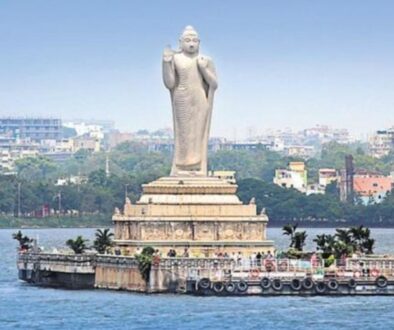Ranthambore National Park: A Wildlife Wonderland in the Heart of Rajasthan
Imagine a place where royal Bengal tigers roam freely, ancient forts whisper tales of history, and the rugged landscape comes alive with the sights and sounds of the wild. Welcome to Ranthambore National Park, one of India’s most famous wildlife sanctuaries and a dream destination for nature lovers, wildlife enthusiasts, and photographers alike.
Nestled in Sawai Madhopur, Rajasthan, Ranthambore is a land where history meets wilderness. Whether you’re tracking a tiger, exploring centuries-old ruins, or simply soaking in the beauty of the landscape, Ranthambore offers an experience that stays with you forever.
A Glimpse into Ranthambore’s Legacy
Ranthambore wasn’t always a wildlife sanctuary. It was once the hunting ground of the Maharajas of Jaipur, where royalty indulged in extravagant shikar (hunting) expeditions. However, recognizing the importance of conservation, the government declared it a protected area in 1955 and later included it under Project Tiger in 1973.
Today, Ranthambore National Park spans over 1,334 square kilometers, making it one of the largest national parks in India. It is home to tigers, leopards, sloth bears, hyenas, and over 300 species of birds, making it a biodiversity hotspot.
What Makes Ranthambore Special?
- One of the best places in India to spot the majestic Bengal tiger.
- A rare blend of nature and history, with ancient ruins, temples, and a 10th-century fort inside the park.
- Scenic landscapes featuring lakes, rocky hills, and dense forests, creating a photographer’s paradise.
- Home to Machli, the world’s most famous tigress, whose legacy continues even after her passing.
Top Attractions in Ranthambore National Park
Ranthambore offers more than just tiger safaris. From breathtaking landscapes to historic ruins, here are the top things to see and do in Ranthambore:
1. Tiger Safari – The Ultimate Wildlife Experience
A safari in Ranthambore is the highlight of any visit. The park is divided into 10 safari zones, each offering a different experience. Tigers, leopards, wild boars, sambar deer, and marsh crocodiles are commonly spotted.
Best Zones for Tiger Sightings:
- Zone 1–5: Best for spotting tigers, as these areas have dense forests and watering holes.
- Zone 6–10: Lesser crowds but equally rich in wildlife, especially birds and sloth bears.
Types of Safaris:
- Jeep Safari (6-seater): Ideal for photographers and wildlife enthusiasts.
- Canter Safari (20-seater): Budget-friendly and great for groups.
💡 Tip: Book your safari in advance as permits sell out quickly, especially during peak season (October to June).
2. Ranthambore Fort – A Historic Marvel Inside the Jungle
Standing tall within the park, Ranthambore Fort is a UNESCO World Heritage Site with stunning architecture, hidden temples, and breathtaking views of the jungle.
Why Visit?
- Explore the 1,000-year-old fort, once a stronghold of Rajput kings.
- Visit Trinetra Ganesh Temple, one of the oldest Ganesh temples in India.
- Enjoy panoramic views of Ranthambore’s forests and lakes.
💡 Tip: If you’re lucky, you might spot a tiger wandering near the fort walls!
3. Padam Talao – The Largest Lake in Ranthambore
This serene lake, surrounded by ancient ruins and lush greenery, is a hotspot for wildlife sightings. It is named after the lotus flowers (Padam) that bloom here during the monsoon.
Things to See:
- Jogi Mahal: A historic hunting lodge offering picturesque views.
- Sambar Deer and Crocodiles: Frequently spotted near the water’s edge.
💡 Tip: Visit during sunrise or sunset for the most breathtaking views.
4. Kachida Valley – The Land of Leopards
Located on the outskirts of the park, Kachida Valley is known for its leopard population and stunning rocky terrain. Since tigers dominate the central zones, leopards prefer this area, where they can move freely.
Why Visit?
- A great chance to spot leopards, sloth bears, and hyenas.
- Less crowded than other parts of the park, offering a peaceful experience.
💡 Tip: Opt for a jeep safari in Zone 5 or 6 for the best chance to see leopards.
5. Malik Talao – The Birdwatcher’s Paradise
If you love birdwatching, Malik Talao is the place to be. This small but beautiful lake attracts migratory birds, kingfishers, herons, and storks.
Common Sightings:
- Painted storks, cormorants, and egrets near the water.
- Mugger crocodiles basking in the sun.
💡 Tip: Bring binoculars and a zoom lens for the best birdwatching experience.
Best Time to Visit Ranthambore
Ranthambore is open from October to June, but the best time to visit depends on what you want to experience:
- October to March (Winter): Pleasant weather, lush greenery, and great for birdwatching.
- April to June (Summer): Best time for tiger sightings as animals gather around water sources.
💡 Tip: Avoid visiting in July–September, as the park remains closed due to the monsoon.
Where to Stay in Ranthambore
Ranthambore offers a wide range of accommodations, from luxury jungle resorts to budget-friendly lodges.
Luxury Resorts:
- Aman-i-Khás: An ultra-luxurious tented camp experience.
- Taj Sawai Madhopur Lodge: A heritage property with royal charm.
Mid-Range Resorts:
- Ranthambore Regency: A popular choice with great amenities.
- The Tigress Resort & Spa: Offers a perfect blend of comfort and nature.
Budget-Friendly Stays:
- Hotel Green View Ranthambore: A cozy stay near the park entrance.
- Tiger Safari Resort: Basic but comfortable, great for budget travelers.
What to Eat in Ranthambore
Being in Rajasthan, Ranthambore offers delicious local cuisine with bold flavors. Some must-try dishes include:
- Dal Baati Churma: Rajasthan’s signature dish of wheat dumplings, lentils, and sweet crumbles.
- Laal Maas: A fiery mutton curry cooked with red chilies.
- Gatte Ki Sabzi: Gram flour dumplings in a rich curry.
- Ker Sangri: A traditional desert bean and berry dish.
For the best dining experience, check out The Oberoi Vanyavilas restaurant or Sky Lounge at The Tigress for stunning jungle views.
How to Reach Ranthambore
Ranthambore is well-connected by air, rail, and road:
- By Air: The nearest airport is Jaipur International Airport (160 km away).
- By Rail: Sawai Madhopur Railway Station (11 km from the park) has direct trains from Delhi, Jaipur, and Mumbai.
- By Road: Well-connected via NH52, with buses and taxis available from Jaipur, Udaipur, and Jodhpur.
Final Thoughts: An Adventure Like No Other
Ranthambore National Park is not just a wildlife sanctuary—it’s an experience that immerses you in the heart of nature and history. Whether you’re tracking a tiger, exploring ancient forts, or simply breathing in the fresh jungle air, Ranthambore leaves you with unforgettable memories.
So, pack your bags and get ready for the adventure of a lifetime! 🐅🌿🚙



